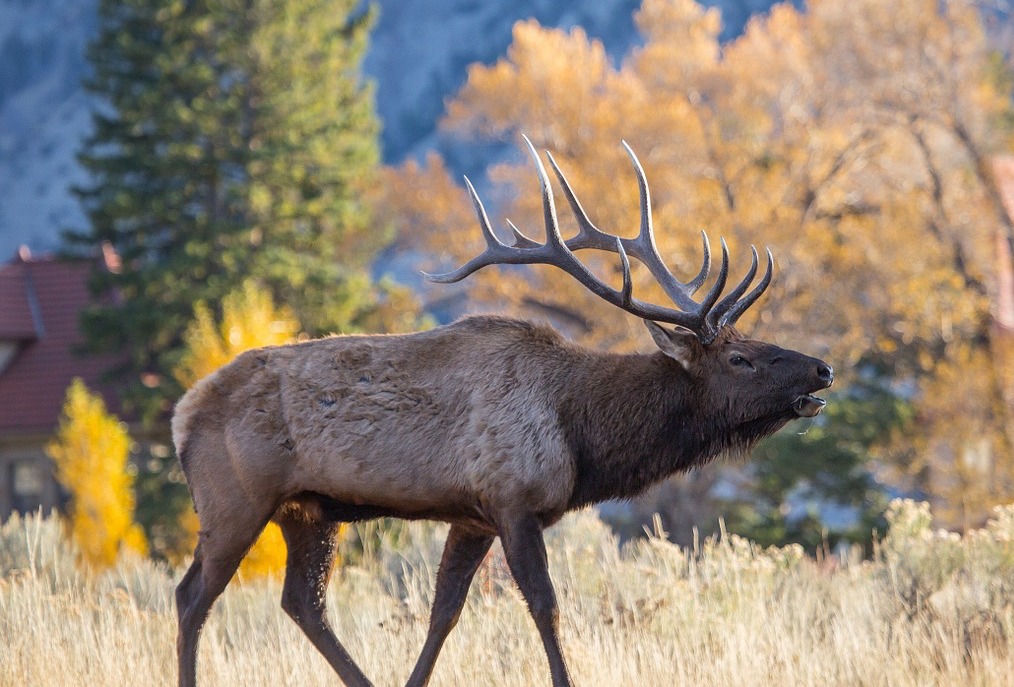The Utah Wildlife Board bans the use of trail cameras and night-vison devices for hunting big game in Utah.
SALT LAKE CITY — All trail cameras are prohibited in the harvest or aid of big game hunting in Utah. The Utah Wildlife Board surveyed 14,000 big game hunters before voting to restrict the use of trail cameras and other hunting-related technologies for tracking big game. These changes and other changes to big game, bear, cougar hunting were made at Tuesday’s Wildlife Board public meeting.

The law passed by the Utah Legislature instructed the Utah Wildlife Board to make some rules governing the use of trail cameras in hunting. Their survey showed that most of the public opposed using transmitting trail cameras for hunting (cameras that transmit images and footage in real time).
A trail camera is defined as a device that is not held or manually operated by a person and is used to capture images, video or location data of wildlife and uses heat or motion to trigger the device. There are some exceptions to the new rule. Government or educational organizations gathering wildlife information for private landowners who are monitoring their property for trespass or active agricultural operations are exempt from the law and so are cities involved in the Utah Urban Deer Program.
It is also against the law to use trail cameras on private property to help in the harvest of big game between July 31 and Dec 31. The board also voted to prohibit the sale or purchase of trail camera footage or data to take, attempt to take, or aid in the take or attempted take of big game animals.
The restrictions include selling images, location information, time and date of the footage and any other data that could aid in the harvest or attempted take of big game.
The board also approved changes that will prohibit using any night-vision device to locate or attempt to locate a big game animal. This will go into effect starting 48 hours before any big game hunt opens in an area and will remain in place until 48 hours after the big game hunt ends in the area.
A night-vision device is defined as anything that enhances visible and non-visible light and includes the use of night-vision devices, thermal-imaging devices, infrared-imaged devices and other electronic devices that enhance the visible and non-visible light spectrum.
Night-vision devices have increased in popularity for in hunting in recent years.
Trail cameras and night-vision devices are also forbidden for cougar and bear hunting in Utah. Agricultural producers will still be able to use trail cameras to aid in the removal of predators preying on livestock.
The board also voted to have the Utah Division of Wildlife Resources create a committee of various stakeholders to consider additional regulations on the use of other hunting-related technologies.

The board also approved other big game hunt changes including:
- Allowing an individual to apply for and hunt the following species in the same year: doe and buck pronghorn, cow and bull moose, and ewe and ram bighorn sheep. This would help streamline the hunt drawing process and is one of the necessary changes to allow the proposed permit numbers to be available during the drawing.
- Requiring bison hunters to review educational information about shot placement for hunting bison prior to the hunt. The Utah Wildlife Board requested this change to provide more education to bison hunters.
- Not requiring hunter orange during the general-season any bull archery hunt that overlaps with the general-season any bull youth hunt. The youth would still be required to wear hunter orange during their hunt.
- Clarifying that the handgun-archery-muzzleloader-shotgun permits are not valid on extended archery hunts.
- Clarifying that both the powder and bullet must be loaded from the muzzle with a muzzleloader.
- Stating that the national wildlife refuges in Utah are closed to hunting unless they are declared open to hunting by the managing authority.
- Clarifying that antlerless elk-control permits must be used on an antlerless-elk control hunting unit and cannot be used on a Cooperative Wildlife Management Unit.
These changes will be in effect for the 2022 hunting seasons.
For other up-to-date changes in cougar, black bear and other changes go to the DWR website: https://wildlife.utah.gov/about-us/contact-dwr.html

